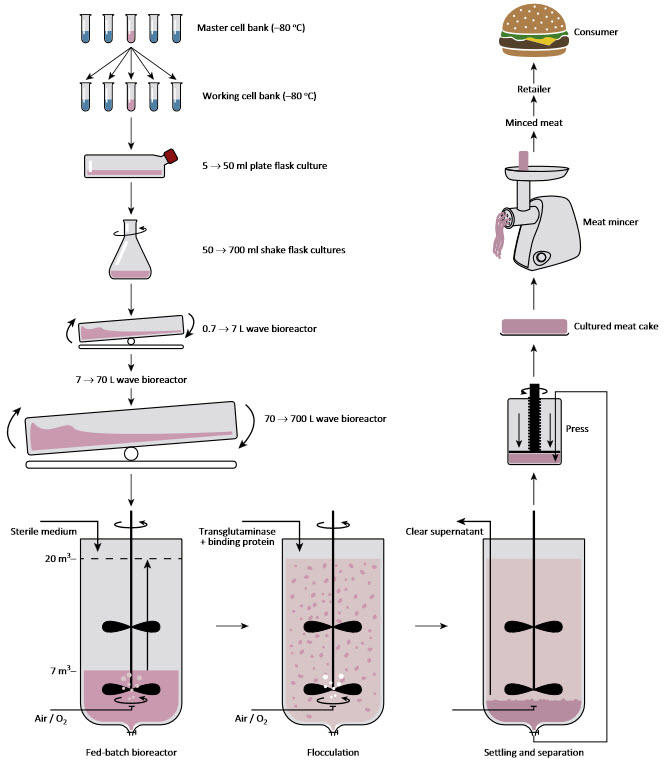May 23, 2014 – Vegans should shield their eyes because I am going to talk about the latest journal paper describing the manufacturing of meat from stem cells. Back in July of last year I wrote a posting about in vitro meat dubbed the “Frankenburger.” An August hamburger tasting event to a select list of guests that took place in London, the U.K., came back with a verdict of bland in describing the gastronomic experience.
But for those who see humanity’s future moving away from meat on the hoof the paper appearing in Trends in Biotechnology entitled, “Cultured Meat: Every Village its Own Factory?” describes a manufacturing process that starts with stem cells and ends with pressed hamburgers. The flow chart below shows the steps involved in culturing the cells and growing them exponentially using a bioreactor. When cell density reaches an optimal volume enzymes and proteins are added to bind the meat cells together to allow for harvesting. As the title of the article suggests, small-scale cultured meat factories using stem cells could be located in every small town and possibly in every groceteria in a country.
And this process isn’t limited to meat on the hoof. Stem cells from chicken, fish, crustaceans and even insects could be manufactured this way. Of course the products would have to get the blessing of regulators and the growth medium in which the cells are cultured would have to be affordable so that the end product doesn’t cost $325,000 U.S. per meat patty.
For humanity the benefits will be enormous. Land currently devoted to livestock or the growing of feed for livestock could be repurposed for other uses including growing crops for human consumption. And for those who are Vegan on moral principles it would mean the end of the industrial slaughter of millions of animals every year.
The authors of the paper do caution the reader that meat grown this way will only become competitive when conventional meat prices rise significantly. But manufacturing and pricing of products is determined by cost per unit and if every small town had a bioreactor meat manufacturing plant, meat produced this way would become more affordable in time.










[…] are three stages in bioreactor processing: upstream processing, harvesting, and downstream bioprocessing. These are the terms that are used in bioprocessing, especially in […]